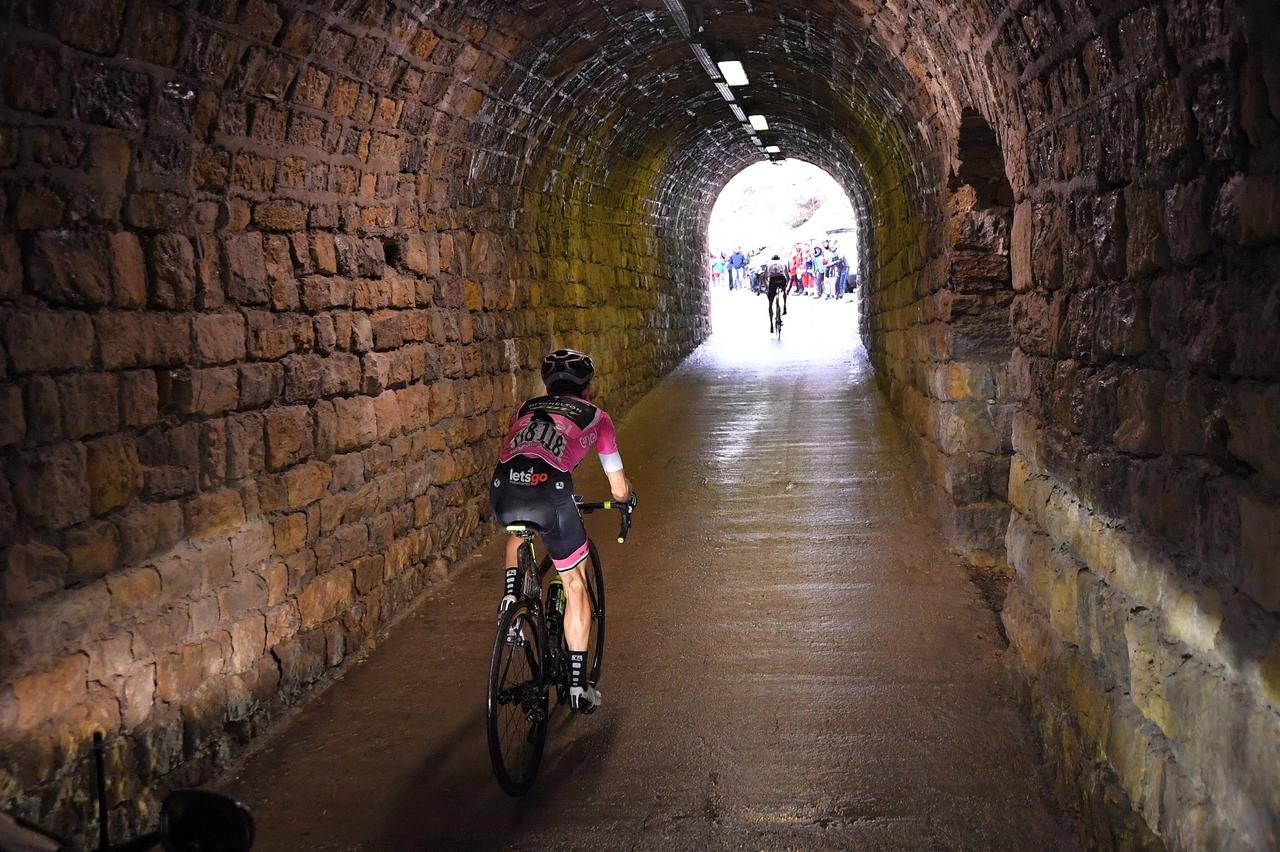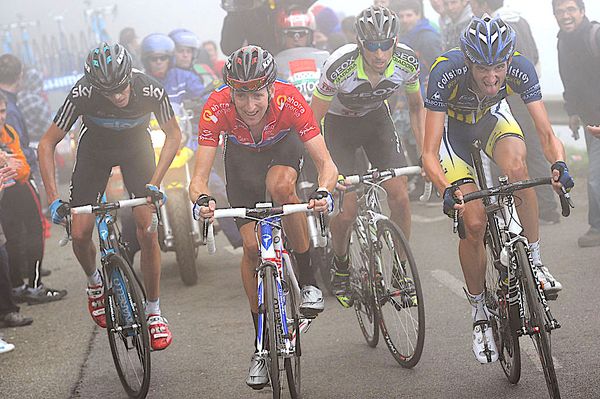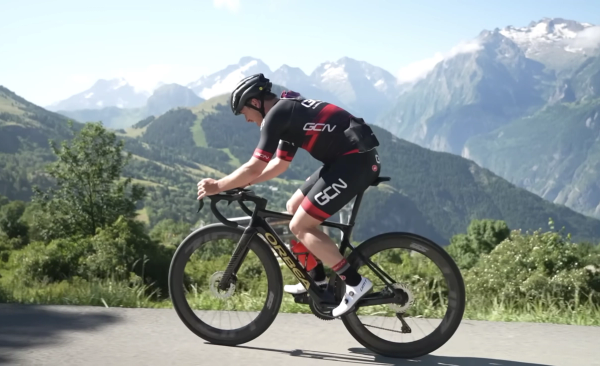The legend of Monte Zoncolan: Three defining days
Chris Froome, Annemiek van Vleuten, and Ivan Basso have all played starring roles on one of the toughest climbs in pro cycling
Logan Jones-Wilkins
Junior Writer - North America
© Velo Collection (TDW) / Getty Images
Monte Zoncolan features a narrow and steep tunnel towards the top
Spain’s Alto de l'Angliru took centre stage at the Vuelta a España last week. It's one of the few climbs that ranks in the highest tier of ascents in professional cycling and the drama of the stage duly delivered. Nevertheless, the Angliru is not alone in the upper echelons of cycling’s most difficult climbs, with Italy’s Monte Zoncolan matching the stats of the Spanish giant.
Before the Vuelta started, the Angliru was featured in a GCN+ documentary with Conor Dunne and former professional David Millar. Now, in the latest documentary out on Tuesday, Si Richardson links up with former WorldTour climber Dan Martin to tackle Italy's answer to the iconic Angliru.
In anticipation of the new release, we've taken a look back at three defining moments that have made the Zoncolan such a special climb. From the first use by the Giro d’Italia Donne in 1997, to the last use in 2021 in the Giro d'Italia, here are the three biggest moments from the Monte Zoncolan.
2018 – Froome begins his comeback
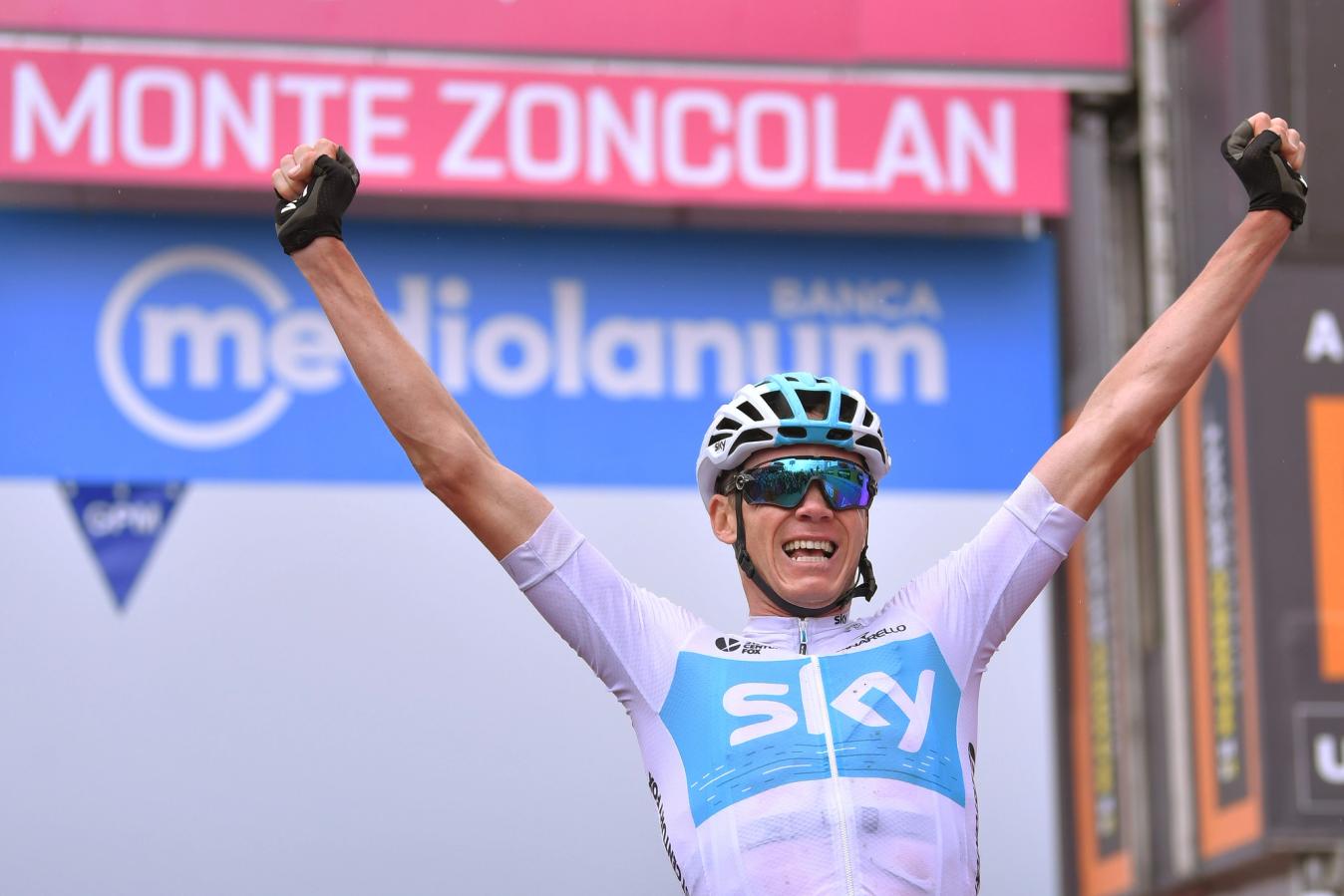
© Velo Collection (TDW) / Getty Images
Chris Froome won on the Zoncolan in 2018
In the 2018 Giro d’Italia, nobody believed a Chris Froome victory was possible as the race rolled onto the Zoncolan on stage 14. Up until that point, Simon Yates had been dominating the Giro, with Froome over three minutes back.
At each turn, Yates had taken time off his rivals. Even his closest rider on GC, Tom Dumoulin, who had been gamely defending his 2017 Giro title, seemed much further adrift than the 47 seconds that actually separated him and Yates. And below Dumoulin sat a line-up of contenders like Thibaut Pinot, Richard Carapaz and Domenico Pozzovivo, all of whom were ahead of Froome on the GC.
In fact, Froome was nowhere near. The Team Sky leader had shipped 3:20 to Yates, having struggled repeatedly on the first collection of mountain stages and found himself all the way down in 11th place. Froome, for all his accolades, seemed out of it.

© Velo Collection (TDW) / Getty Images
Chris Froome shoves a dinosaur on the Zoncolan
Everything changed, though, when they hit Monte Zoncolan, as the final climb on stage 14. In front of huge crowds Froome rode everyone off his wheel, putting a decent gap between himself and the chasing riders in the final 4.5km
Simon Yates attacked later on the climb, and was able to eat into the advantage that Froome had established. In the final kilometres, the two British riders engaged in a fascinating drag race across the exposed switchbacks up the now iconic grassy slopes of Zoncolan. While Froome ultimately kicked on for the win, he managed to only gain six seconds on Yates by the finish.
Even if the gap wasn't much in terms of time, it proved to be the catalyst for what came five stages later, with Froome’s epic solo victory over the Col du Finistere – a day that will go down as one of the defining days of the Team Sky era. It completed a remarkable comeback to see Froome win the 2018 Giro d'Italia and cement that year's edition as of the most memorable in the race's history.
2010 – Ivan Basso’s most triumphant moment
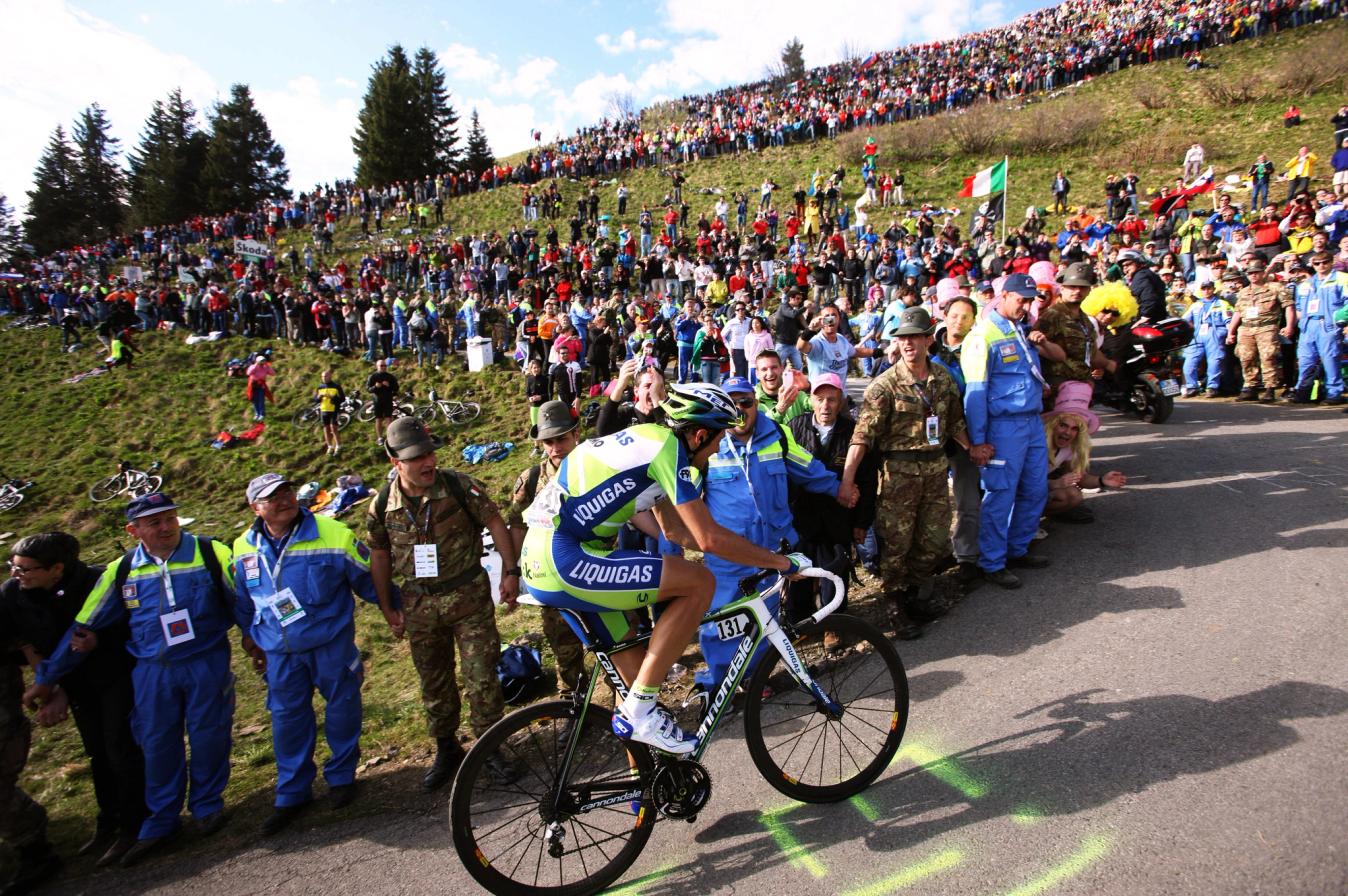
© Velo Collection (TDW) / Getty Images
Ivan Basso in the final 400 metres of the Zoncolan
In 2010, the Zoncolan once again played a pivotal role in a Giro d’Italia that saw the return of Italian climber Ivan Basso. It was there, on the steep slopes up the climb, where Basso continued his march on the general classification after finding himself well down in the standings half-way through the race.
There are few more complicated figures in pro cycling’s recent history than Ivan Basso. Basso was a GC contender who emerged at the tail end of the Lance Armstrong era who served a doping suspension before he returned to the pro peloton in 2009.
While he had already had a season back in the pack before the 2010 Giro d’Italia, it was the race that began to redefine his career. Within the race, the Zoncolan was the climb that redefined his race.
Before that climb, Basso and the rest of the general classification contenders had been ambushed by a breakaway on stage 11 that commanded a lead of almost 13 minutes over them. A young Richie Porte ascended into the maglia rosa while two of the top teams, Astana and Liquigas, feuded in the media over who was at fault for losing so much time.
While Porte would lose the jersey, a few of those who had gained time in the general classification held onto their advantage longer than expected. Chief among them was David Arroyo who ascended into the pink jersey on stage 14, the day before the Zoncolan.
At the start of stage 15, which culminated in the Zoncolan, Arroyo had an advantage of 6:51 on the first of the GC contenders, Vincenzo Nibali. Basso was a further 52 seconds back.
On the interminable slopes of the Zoncolan, Basso's Liquigas team quickly cut the group down with a pace that reduced the GC group to just three riders. Gone were Arroyo, Nibali, Richie Porte, Alexandre Vinokourov and Carlos Sastre. All who remained were Cadel Evans and the late Michele Scarponi.
But Basso wasn't done. Scarponi was the next of the trio to struggle on the steep pitches around the curves of the climb, before Evans later fell victim to Basso’s unmatched climbing. As the Italian emerged from the tunnel at the summit, he was still short of the pink jersey.
Yet, with the gaps between every other rider in the race, it seemed like the jersey would be his sooner rather than later. Sure enough, by the time Basso wheeled to a halt in Verona, his gap over Arroyo was nearly two minutes. Basso, after two years of a doping suspension following Operación Puerto and one year of solid if unspectacular racing, was back.
2018 – Van Vleuten raises the bar in the Women’s WorldTour

© Velo Collection (TDW) / Getty Images
Annemiek van Vleuten at the summit of the Zoncolan in 2018
The last time the women’s peloton took on the Zoncolan, Annemiek van Vleuten was at the absolute peak of her powers.
In Giro Donne in 2018, Van Vleuten, who was already in the maglia rosa, battled Ashleigh Moolman-Pasio. The two had become the dominant forces on the steepest of the climbs and the Zoncolan provided the ultimate battleground for them both.
With the two together with just under 3km left to climb, Van Vleuten stepped on the gas and left Moolman-Pasio in her wake. She powered away to take the win on the stage and essentially secure the leader's jersey, with only one stage left.
Beyond that stage in 2018, the women’s history on the Zoncolan is limited. The first and only other time the Zoncolan was properly introduced to the Giro was back in 1997 as part of the Giro Donne.
On that occasion, Fabiana Luperini was the winner and with it became the first champion of the Zoncolan, for either gender, in a period where she dominated women’s cycling with five overall wins at the race.
Luperini remains at the top of the table for Giro Donne race wins, holding one more than both Anna van der Breggen and Annemiek van Vleuten.
While Luperini’s record is safe, with both of those riders now retired, Van Vleuten looms large in the history of the Zoncolan. The Dutch rider won the only other time the race came to the mountain as part of the Giro Donne. Crucially, she is the only victor on the more difficult ascent from Ovaro, since Luperini was victorious up the less challenging Sutrio side.
To take nothing away from Luperini, Van Vleuten’s achievement on the Zoncolan was hugely significant not only because of the Ovaro ascent but also the period in which the race was run.
2018 was the beginning of what quickly became an era of exponential growth in women’s cycling. While the Giro Donne has been a staple on the calendar since the 1990s, the progression of the Women’s WorldTour in terms of riders, teams and professionalism in recent years has been huge.
Thus, when Van Vleuten was able to take a resounding win ahead of the stars of women's cycling who still loomed large in the peloton on the Zoncolan, leaving it off any list of significant races up the climb would be akin to heresy.
Mountains: Zoncolan is out now on GCN+. Watch on demand and explore our extensive collection of exclusive and original cycling films.
